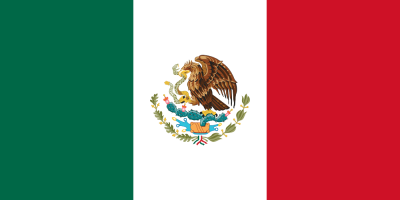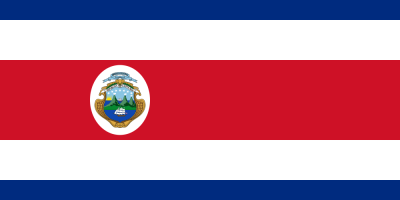Panama flag color codes features vibrant red, blue, and white stripes with a star emblem in the canton. These bold colors hold meaning and represent key aspects of Panamanian history and identity. If you want to incorporate Panama’s iconic flag design into a website, app, or other design project, knowing the exact Panama flag color codes is essential. This article will provide the HTML HEX, RGB, PANTONE, HSL, CMYK, HWB, and NCOL values for the red, blue, and white on the Panama flag. With this color code reference, you can accurately match the tones of the Panamanian flag in digital or print projects. Read on to get the official color specifications for the Panama flag colors.
Table of Contents
What are the colors of Panama flag?
The colors of the Panama flag are:
- Red – Represents the blood spilled for freedom and independence. Specifically, Pantone 186 C, RGB(206, 17, 38), HEX #CE1126.
- Blue – Represents the Conservative political party. Specifically, Pantone 286 C, RGB(0, 56, 144), HEX #003890.
- White – Represents peace and purity.
The flag features horizontal stripes of blue, white, and red with a single blue star in the top left corner. The blue star represents the country’s position on the map in relation to the continents of the world. The flag’s simple yet bold design encapsulates key elements of Panama’s national identity and history.
Panama flag color codes & Color Names:
RED
| Color Model | Value |
|---|---|
| HTML | #FF0000 |
| HEX | FF0000 |
| RGB | 255, 0, 0 |
| PANTONE | 186 C |
| HSL | 0°, 100%, 50% |
| CMYK | 0%, 100%, 100%, 0% |
| HWB | 0°, 0%, 0% |
WHITE
| Color Model | Value |
|---|---|
| HTML | #FFFFFF |
| HEX | FFFFFF |
| RGB | 255, 255, 255 |
| PANTONE | N/A |
| HSL | 0°, 0%, 100% |
| CMYK | 0%, 0%, 0%, 0% |
| HWB | 0°, 100%, 0% |
BLUE
| Color Model | Value |
|---|---|
| HTML | #000080 |
| HEX | 000080 |
| RGB | 0, 0, 128 |
| PANTONE | 287 C |
| HSL | 240°, 100%, 25.1% |
| CMYK | 100%, 87%, 0%, 50% |
| HWB | 240°, 0%, 49.8% |
What is the meaning of colors in the Panama flag?
The colors of the Panama flag hold symbolic meaning:
- Red – This represents the blood spilled and lives lost during Panama’s fight for independence from Spain and Colombia. It signifies the bravery and sacrifice of those who fought for Panama’s freedom.
- Blue – The blue stripe represents the Conservative Party, one of the political parties that influenced Panama’s independence. The blue star in the top left corner also stands for the Conservative Party.
- White – The white stripe represents peace, purity, and honesty. It exemplifies Panama’s virtues as a nation.
So in summary:
- Red = Blood, sacrifice, bravery
- Blue = Conservative Party
- White = Peace, purity, honesty
The bold tones of red, blue, and white evoke Panama’s history of struggle, political ideals, and national virtues. The flag’s symbolic colors reflect values of liberty, sovereignty, and integrity that are important to Panamanian national identity.
Explore More Flag Colors:
- Sri Lanka Flag Color Codes
- Guinea Flag Color Codes
- Aruba Flag Color Codes
- Dominican Republic Flag Color Codes
FAQs: Frequently Asked Questions:
Is Panama a rich or Poor country?
Panama is considered to be an upper-middle-income country. The country has experienced significant economic growth in recent years, driven in part by the Panama Canal and a diverse economy that includes sectors such as banking, logistics, and tourism.
Is Panama country expensive?
Panama is generally considered to have a cost of living that is lower than that of many developed countries, particularly in North America and Europe. However, costs can vary depending on the specific location within Panama and individual lifestyles.
Panama City, the capital and largest city, tends to have higher living costs compared to other regions of the country. Expatriates and tourists often find that certain goods and services, especially in urban areas, may be priced similarly to or slightly lower than those in their home countries.
Why is Panama so famous?
Panama is famous for several reasons, and here are some key factors contributing to its fame:
Panama Canal: Perhaps the most significant and globally recognized feature of Panama is the Panama Canal. The canal is a vital waterway that connects the Atlantic and Pacific Oceans, facilitating international maritime trade. Its construction and operation have had a profound impact on global shipping and economic activities.
Biodiversity: Panama is known for its incredible biodiversity, with diverse ecosystems ranging from rainforests to coastal areas. It is home to a wide variety of plant and animal species, making it a popular destination for eco-tourism and wildlife enthusiasts.
Geographical Location: Panama’s strategic geographical location as the narrow land bridge connecting North and South America has made it a crucial hub for international trade and transportation.
Cultural Diversity: The country has a rich cultural heritage influenced by indigenous peoples, Spanish colonial history, and Afro-Caribbean traditions. Panama’s cultural diversity is celebrated through its music, dance, festivals, and cuisine.
Balboa and U.S. Dollar: Panama uses both the Panamanian Balboa (PAB) and the United States Dollar (USD) as its official currencies. This duality is unique and has economic implications, especially considering the strong presence of international banking and finance in the country.
Free Trade Zones: Panama has established free trade zones, such as the Colon Free Zone, which is one of the largest free trade zones in the world. These zones attract businesses and contribute to Panama’s status as a commercial and logistical hub.
Tourism: Panama’s diverse landscapes, including beautiful beaches, tropical rainforests, and mountainous regions, make it an attractive destination for tourists seeking adventure, nature, and cultural experiences.
Retirement Destination: Panama has gained popularity as a retirement destination, especially among expatriates from North America and Europe. Its warm climate, affordability, and modern amenities contribute to its appeal as a retirement haven.
What is the religion of Panama?
Panama is a predominantly Christian country, with the majority of the population identifying as Roman Catholic. The Catholic Church has historically played a significant role in the country’s culture and society. However, like many countries, Panama is characterized by religious diversity, and there is a growing presence of other religious denominations.
In addition to Catholicism, there is a significant and growing Protestant community in Panama. Various Protestant denominations, including evangelical and Pentecostal churches, have gained followers.
Is Panama a safe country?
Panama is generally considered a safe country for tourists and residents. However, like any destination, it’s essential to be aware of local conditions and take common-sense precautions.
Here are some key points to consider regarding safety in Panama:
Crime: While overall crime rates are relatively low, certain areas, especially in urban centers like Panama City, may experience higher crime rates. It’s advisable to take standard precautions such as avoiding poorly lit areas at night, securing valuables, and being cautious in crowded places.
Tourist Areas: Popular tourist areas, such as the Panama Canal, Casco Viejo (the historic district of Panama City), and Bocas del Toro, are generally safe. However, it’s still important to be vigilant and take precautions against petty crimes, such as pickpocketing.
Natural Disasters: Panama is prone to natural disasters such as earthquakes and tropical storms. It’s advisable to be aware of the local emergency procedures and stay informed about weather conditions, especially during the rainy season.
Health Precautions: When traveling to Panama, it’s recommended to take health precautions, including vaccinations and proper hygiene practices to prevent food and waterborne illnesses.
Local Laws and Customs: Familiarize yourself with local laws and customs to ensure that you are respectful and compliant. Panama is known for its friendly and welcoming culture, and respecting local norms contributes to a positive experience.
Why is Panama so rich?
Panama’s status as a relatively prosperous country is influenced by several factors:
Panama Canal: The Panama Canal is a major driver of the country’s economy. It is a key international waterway that connects the Atlantic and Pacific Oceans, facilitating global maritime trade. The revenue generated from tolls paid by ships passing through the canal contributes significantly to Panama’s income.
Strategic Location: Panama’s geographical location as the narrow land bridge connecting North and South America makes it a strategic hub for international trade and transportation. This has led to the development of a robust logistics and shipping industry, further boosting the country’s economic activity.
Economic Diversification: Panama has diversified its economy beyond the canal. The country has a strong services sector, including finance, banking, and tourism. The Colon Free Zone, one of the largest free trade zones in the world, has also attracted businesses and investors.
Stable Economy: Panama has maintained a relatively stable economic environment with low inflation and a consistent GDP growth rate. The country’s use of the U.S. dollar as its official currency contributes to financial stability.
What’s a good salary in Panama?
Salaries in Panama can vary widely depending on factors such as industry, job role, location, and the individual’s level of experience and qualifications. As of my last knowledge update in January 2022, I can provide a general overview, but keep in mind that economic conditions and salary levels may change over time.
In Panama City, the capital and the country’s largest city, salaries are generally higher compared to other regions. Professionals working in sectors such as finance, banking, and international business may command higher salaries.
Can I live in Panama for $1000 a month?
Living in Panama on $1000 a month is possible, but it would require careful budgeting and lifestyle adjustments. The cost of living can vary depending on your location, lifestyle, and spending habits. Here are some factors to consider:
Housing: Rent is a significant expense. If you choose to live in a more affordable area outside major cities, you may find lower rental costs. Shared accommodations or renting a room rather than a whole apartment could also be more budget-friendly.
Utilities: The cost of utilities, including electricity, water, and internet, can vary. Be mindful of your usage and explore cost-effective options.
Transportation: Public transportation is generally affordable in Panama. If you live in a city, you might use buses or the metro. If you choose to own a vehicle, consider the associated costs like fuel, maintenance, and insurance.
Food: Cooking at home and buying local produce can help you save on food expenses. Eating out at local markets or smaller eateries is often more budget-friendly than dining in upscale restaurants.
Healthcare: Healthcare costs can vary. Consider having health insurance to cover medical expenses. Public healthcare in Panama is available, and there are also private healthcare options.
What currency is Panama?
Panama uses the United States Dollar (USD) as its official currency. The country adopted the U.S. dollar as its legal tender in 1904, and it has been the official currency ever since. As a result, Panama does not have its own national currency, and the U.S. dollar is used for all transactions, including everyday purchases, salaries, and financial transactions. This makes Panama one of the few countries outside the United States that officially uses the U.S. dollar as its official currency.













